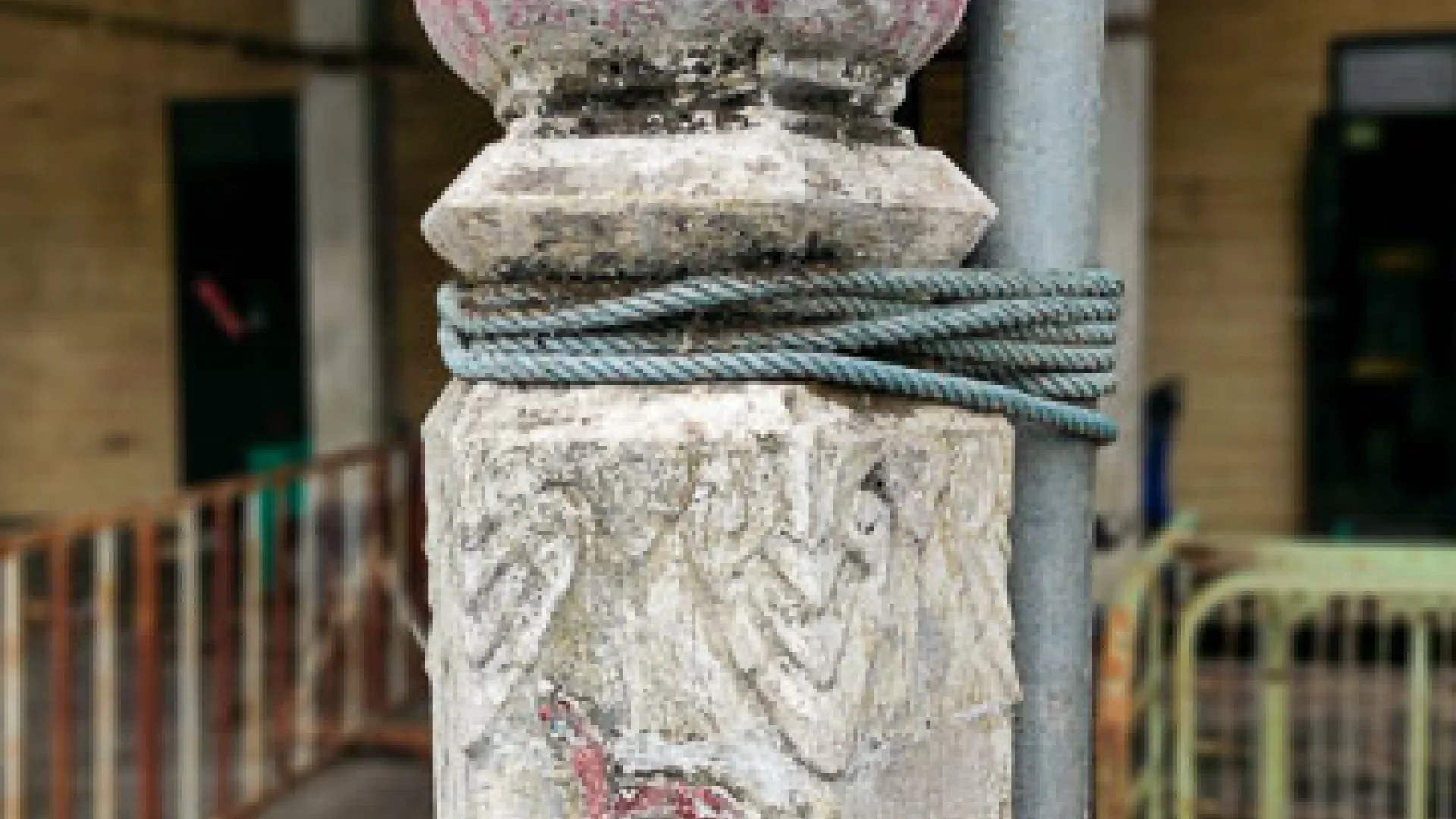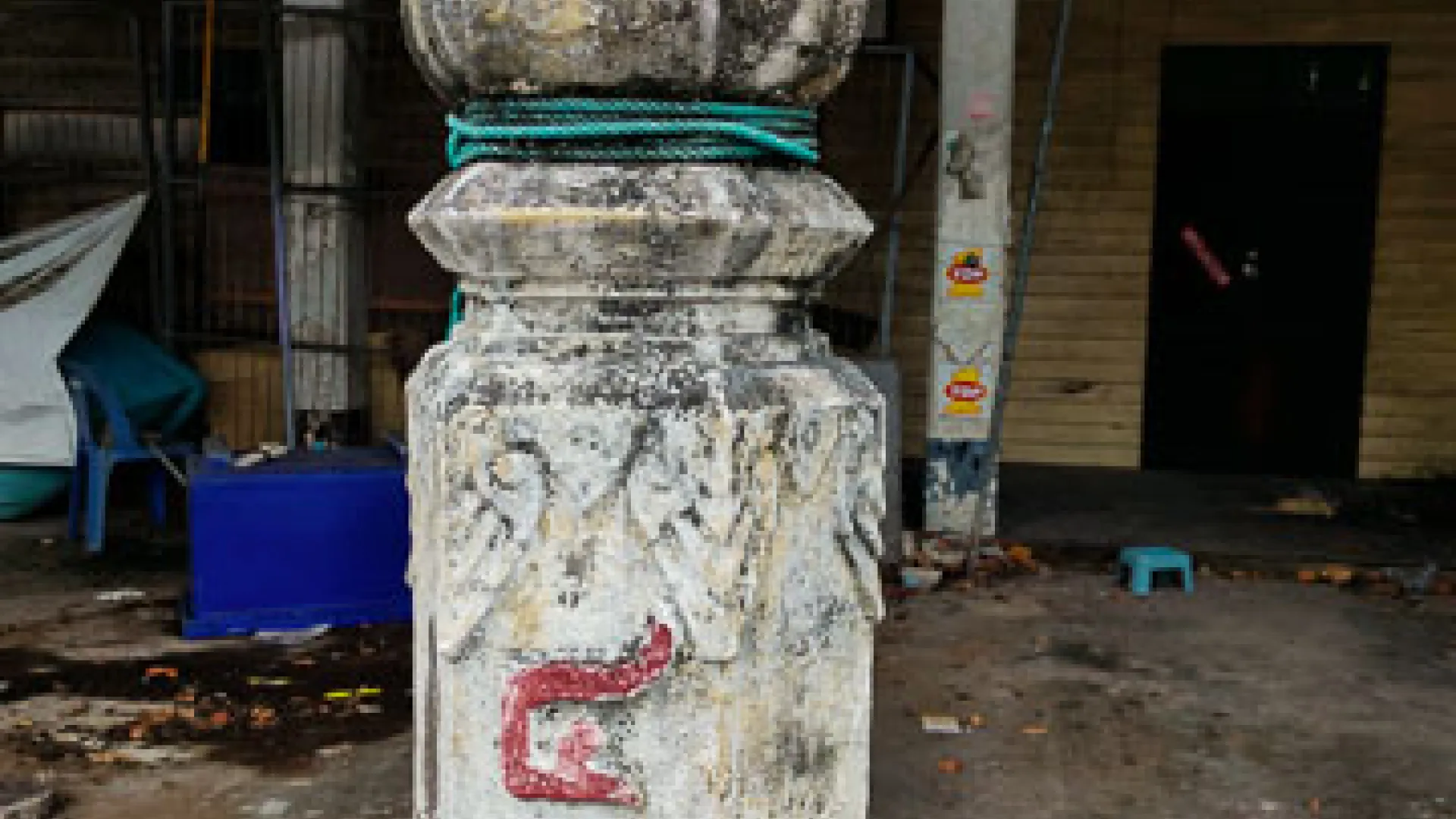After the 1932 Siamese Revolution, not only did the "Constitution Tray" become a symbol that the People's Party used to spread awareness about democracy to the people through various media and structures, the "Six Principles" also became a concept that was made tangible. These principles, or pillars, were included in the first announcement of the People's Party, which was used as a policy guideline for the change of government. The tangible forms of these principles are often found in art, architecture, decorations, or products related to the People's Party, which often reference the number 6, such as the hexagonal fort supporting the Constitution Tray of the Democracy Monument, the portico columns of various government buildings, etc. Moreover, it was not only the People's Party, as the government leader at that time, that disseminated these policy guidelines. On the contrary, the private sector and the public also responded to these ideas by creating structures and memorabilia with democratic symbols. This also included "educational institutions," one of the important cogs in driving academic and social awareness. In addition to incorporating democratic concepts into the curriculum, some educational institutions also created structures that served as memorials to this important change in the country, such as the six pillars at Wat Bang Chang Tai School in Nakhon Pathom Province.
According to the information from Associate Professor Pitchaya Soomjinda, a lecturer at the Faculty of Fine Arts, Chiang Mai University, who is an alumnus of Wat Bang Chang Tai School and the one who discovered and published the story of the "Six Pillars'' in this school, Wat Bang Chang Tai School (Kittiwittayakorn) is located in Bang Chang Subdistrict, Sam Phran District, Nakhon Pathom Province. It is a small school built in 1921. Professor Pitchaya attended this school in grade 6 (around 1990) in the old two-story school building, which is now abandoned. He remembered seeing 6 short, dilapidated pillars located near the flagpole within the school grounds. At that time, he didn't pay much attention to them. It was not until 2017 when he had the opportunity to revisit his old school and found that the pillars were still there (in a more dilapidated condition). Upon examining the details on the pillars, he was certain that they were the Six Principles pillars of the People's Party. The pillars are simple, plain, lotus-shaped concrete pillars, sitting on a round base, supported by a hexagonal column. On top of the pillars are inverted concrete gables, painted white, with the lotus and text painted red. The 6 pillars are arranged in order according to the Thai numbers on the top of the side facing the flagpole. Below the numbers are concrete-sculpted texts displaying the Six Principles of the People's Party as follows: 1. Independence, 2. Economy, 3. Safety, 4. Equality, 5. Liberty, and 6. Education. It is speculated that they were built after 1939, based on the inference from the Six Principles lotus pillars in the poster "Constitution of the Kingdom of Thailand" flanking the Constitution Tray, which might have inspired Wat Bang Chang Tai School to adapt the round pillars into hexagonal ones while keeping the order of numbers and texts of the Six Principles as in the poster.
This discovery by Professor Pitchaya also reflects the period when the People's Party completely lost their leading power. If we go back to 1990, when Professor Pitchaya first saw these 6 pillars, they were in a dilapidated state and no teacher in the school mentioned them. He even thought to himself that they were "strange, non-rhyming slogans" of the school from a long time ago. It can be said that these 6 pillars were just outdated monuments that came with the school without anyone paying attention to them (they were abandoned just like the old abandoned school buildings). From the information that this is the only set of pillars found in educational institutions until now, it can be inferred that after the People's Party lost power in 1947, other schools may have completely removed these symbols associated with the People's Party. However, the discovery of the "Six Pillars" in Nakhon Pathom province confirms the awakening of democratic ideas among people in the education system, which is not only concentrated in the country's center such as Bangkok.








